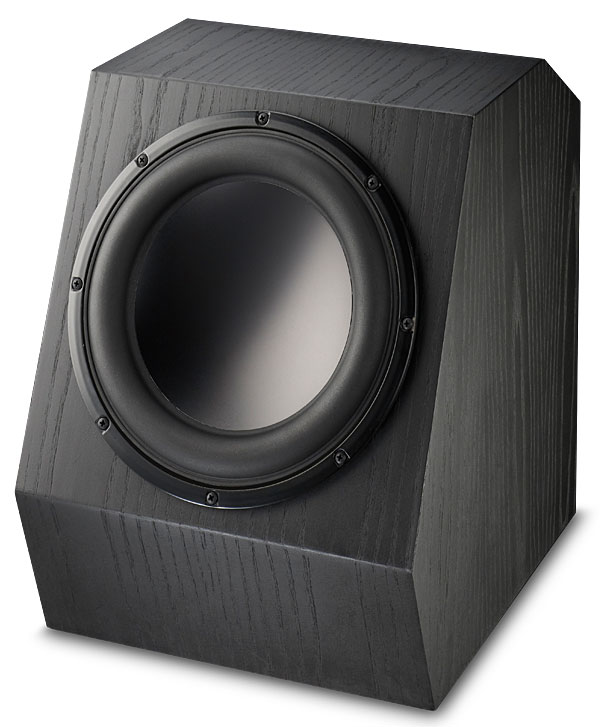Gallo Nucleus Classico CL-2 Speaker System Page 2

Nick Drake’s Five Leaves Left is a masterpiece of production (by Joe Boyd) and engineering (by John Wood) as well as perhaps the most astonishing set of songs ever recorded by an 18-year-old. Hearing it through the CL-2 was like hearing it for the first time minus a layer of gauze. The monitors did not accentuate the surface noise on my old reliable vinyl copy except for a few inescapable pops. All action—voice, acoustic guitar, and orchestrations—was confined between the speakers, but all of it was dazzlingly colorful, strongly imaged, and well paced. I did have to switch from Pure Direct 2.0 stereo to bass-managed stereo to give Danny Thompson’s string bass the prominence it deserved. The interplay among Drake’s dark, smoky voice, his rhythmically insistent guitar, and the undulating string orchestra on “River Man” was breathtaking and as good as I’ve ever heard if not better. However—and this is the one persistent reservation I had—there were moments in several other tracks when the full-band glory that is Drake’s voice seemed too light in the midbass and was almost engulfed in the arrangements. I’ve never heard this before in the decades I’ve been listening to this album. It affected only this demo.
Conclusion/Postscript
A review can tell a story, in addition to its usual functions, and this story has both a twisting plot and a surprising ending. Unusually, and after reading of my experience with the aforementioned Nick Drake tracks, my editor shared the results of the lab measurements conducted after submission of my review. In retrospect, I was so seduced by the vibrant beauty of the cylindrical tweeter that I largely overlooked an imbalance in the CL-2’s measured frequency response that could have the apparent effect of thinning the mid-to-upper bass frequencies. This helped explain what I heard with the Nick Drake album, though I can’t say whether the system would have sounded the same with either of the two Classico series towers in place of the CL2s.
Countering that, however, is the remarkable way in which these speakers engage with the listener. I can best conclude by pointing out that Gallo’s online sales policy allows buyers to audition the Classicos at home and return them, “no questions asked,” within 60 days. Interested Home Theater readers can let their own ears decide for themselves how well Gallo has succeeded in bringing the music to life.

[Editor’s Note: Occasionally, we find that measurements of a speaker reveal frequency response characteristics that our reviewer failed to hear, or which he observed, reported on, and consciously forgave. In this case, the CL-2 (see HT Labs Measures) showed an unusual elevation between 1 and 6 kilohertz, an uneven sawtooth response between there and the tweeter’s outer limits, and what looks to be scant output in the bass region. As explained by technical editor Mark Peterson, himself an engineer and experienced speaker designer, the midrange hump elevates the speaker’s low-frequency –3-dB down point in our measurements, for which we use the critical 500 hertz to 2 kHz midrange band as a point of reference. Gallo’s published specification puts the –3-dB point at a low 39 Hz. We don’t argue that, in the absence of referencing the elevated midband, the speaker would display higher output at its low end suitable for mating with a subwoofer. But not without some compromise. “If you balance the subwoofer to the level of the woofer,” Peterson explains, “then with our usual relative hearing, the elevated midrange is what our ears normalize to, and the system will likely sound thin. Simply having an elevated midrange would be described as ‘presence’ by many, but in this case, the tweeter is up in level relative to the bottom as well so will likely be described as thin. If you boost the sub to the level of the midrange, then there will be an obvious hole in the midbass. This would probably sound thin and perhaps boomy at the same time.”
Anthony Gallo suggested our results were consistent with both the CL-2 and CLS-10 subwoofer being measured prior to these speakers’ SP2 acoustic material properly settling, a process that is said to take anywhere from 30 minutes to 2 hours of stationary playing time any time the speaker is repositioned. We remeasured one of our CL-2 samples after allowing it to settle in this way for several hours, but the results did not appreciably change.
Without dismissing the notion that our numbers could somehow be wrong, it’s reasonable given the hypnotic allure of the speakers’ cylindrical tweeter that Mark (Fleischmann) might not have immediately detected this kind of frequency imbalance. But he clearly heard something askew with male voice on some very well-known reference tracks. It was this observation, not the measurements themselves, that forced my hand in denying this system our Top Pick designation (though we awarded TP for the subwoofer). I also reduced the suggested Performance rating from five stars (Reference) to four (Excellent).
But readers should know I struggled with this. Mark’s initial enthusiasm for the Classicos can’t be negated. Our golden-eared audio editor was taken in and got fully lost in whatever he played. That is rare, indeed, and a clear demonstration of how measurements don’t tell the whole story. And it’s why we don’t share our measurements with the reviewer prior to subjective evaluation. The real test is this: Do the speakers transport you into the music and disappear into the background? This time, they did, though longer-term use might have more fully exposed any flaws. Still, I won’t deny these Gallos their uncanny ability to seduce the listener. If you’re as intrigued as I am, proceed with your audition. —Rob Sabin]
- Log in or register to post comments






























































